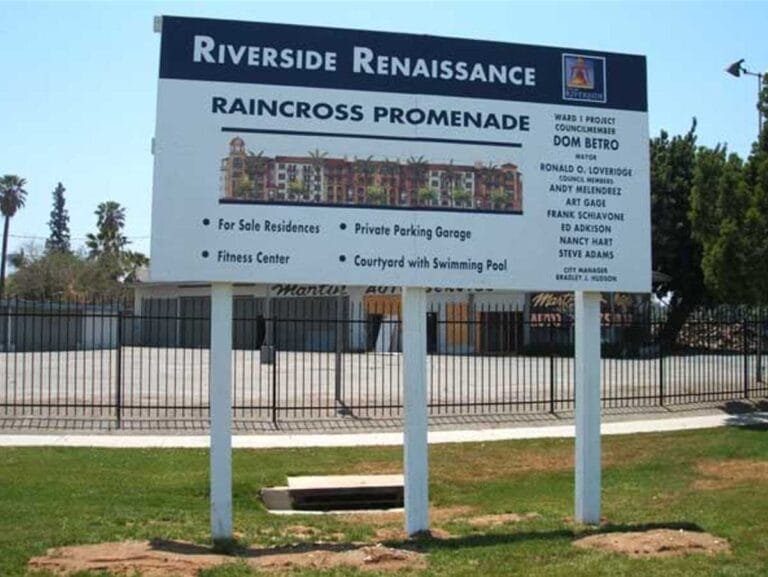Wither “local” media?
What if, one day, there was no Riverside Press-Enterprise? No San Bernardino County Sun? Or no Inland Valley Daily Bulletin? For longtime residents, this scenario may be difficult to imagine. But in today’s dire economic climate, particularly within the newspaper industry, such an outcome is indeed possible. And in a region without a major locally-based TV station, as is Inland Southern California, such could also prove costly.
Recently, long-standing newspapers in Denver, Seattle, Detroit and San Francisco have either shut down completely, are close to doing so, cut back daily delivery, or are on the verge of disappearing. Almost all papers nationwide are suffering from stagnant or falling circulation (some more so than others, including neighboring Orange County Register). While others, including the parent owner of the Los Angeles Times, are struggling under the weight of large amounts of debt.
Likewise, practically every newspaper across the nation, including Southern California’s major dailies, have reduced staff and cut newsprint in recent years. Without a doubt, some of this reduction started several years back as readers began slowly migrating to the Internet. However, the recent economic downturn nationwide, and in particular the real estate bust locally, have severely impacted the newspaper industry. Add to this the significant decrease in advertising revenues, the growing popularity of such classified-type sites like Craigslist, the dwindling circulation — and you have a recipe for financial disaster.
Now, many long-time detractors of their local newspaper (typically on account of political leanings) as well as younger, Internet-savvy (and less loyal) generations may say, “Good riddance” and/or “Oh well.” But what both likely fail to fully realize is the importance that newspapers have played in essentially recording the history of their local communities. They also may not realize the amount — and depth — of local content produced by newspapers.
Thus, if one or more of the three major “Inland” newspapers (P-E, Bulletin, Sun) vanish, where would residents of Inland Southern California get their local news? From the LA-based television stations? Again, not likely. From a reorganized and/or regionally-minded Los Angeles Times? Maybe, but highly unlikely. From a merged P-E/Bulletin/Sun “super regional paper”? Possibly, but doubtful. From local blogs? Um, no. At least not anytime soon, that is. And let’s be honest, blogs such as this one, which typically offer opinions and/or aggregate news from existing local media sources, simply cannot — and will not — replace dozens, even hundreds of local reporters and editors, not only in the breadth of content provided, but in journalistic quality, standards and accountability.
So then, where?
One possibility may very well be sites such as InstantRiverside.com. But this concept is still in its infancy and still does not yet offer the same depth and breadth of content as do newspapers. (Personally, we’d like to see a hybrid version of InstantRiverside with the depth of a newspaper — or vice versa.)
Thus, assuming the local daily papers weather the economic and industry turbulence and survive long-term, the answer to this question is likely to be the same places where the blogs themselves are linking to — the newspaper Web sites. But there’s three major adjustments that will need to be made in order for newspapers to remain viable in the long run on the Internet as they have been in print. And, of course, at least two of these involve money.
First, newspapers will need to better incorporate the capabilities (and 24-hour aspect) of the Internet into their news gathering (and delivery) structures. Everything from blogs and videos for instant reporting to interactive graphics and searchable databases for in-depth projects. They will also need to better understand the hows and whys of online community networking features, such as commenting systems and external aggregating methods. And they’ll need to allow for delivery on a number of devices — computers, cellphones, electronic readers, etc. Fortunately, most newspapers are already making great strides in these regards.
Second, Internet advertising will need to ramp up considerably to make up the difference between newsprint rates and online rates. Dollar for dollar, current online rates pale in comparison to those in newsprint. Certainly, reorganization of the news staff will still be necessary as the full gap will not likely be closed any time soon, but online rates and revenues will no doubt need to increase.
Third, newspapers will need to develop new online revenue streams, including an online format for subscriber and/or “paid” content — a very foreign concept to most online readers (yet, many think nothing of paying for a print version). Such subscriptions could include daily, weekly and/or monthly charges. But in order to be truly successful, it will need to incorporate nominal, one-time or short-term fees (such as per article), which, in today’s online “news aggregating” world, is indeed important. How many folks would be willing to pay full subscription rates simply to view an article clicked on from another Website or blog? None. Especially those from outside the region. But many might be willing to be charged a dime or a quarter via a PayPal type system (a concept promoted recently by former TIME editor and CNN executive Walter Isaacson).
Simply put, newspapers will need to find a way to eventually transfer many, if not all, of their “paid” subscribers from print to the electronic format. But more importantly, they will also need to pick up the younger generations, many of whom are not likely receiving — nor currently paying for — the newspaper.
But many questions remain.
Can newspapers survive the current turbulence long enough to make necessary changes to their online delivery systems? Will they (can they?) reorganize into a 24-hour news gathering/reporting cycle with better use of video/multimedia while still maintaining some sense of “daily” record and/or archiving? Will the industry as a whole begin shifting to some form of online subscriptions? And will new revenue streams even allow all this to happen (and help keep them viable)?
Likewise, will longtime readers — and detractors — understand the value of supporting these outfits as they struggle to reorganize toward a more electronic-oriented future? Will future generations, including today’s twenty- and thirty-somethings, understand the importance newspapers have played in being the “record” of history for a city, county and region? Moreover, will both groups be willing to pay for at least some content online?
Bottom line, if residents understand the value of local news and the importance of their local newspaper, they’ll likely understand the need to begin paying for some or all of the content in an electronic format — just as they do now for print. This may not happen next month nor maybe within the next year or two. But it’s likely inevitable. Yet, will the current economic climate allow newspapers to survive long enough for such a major transformation to even happen?
Pew Research Center
- Journalism.org – State of the News Media: 2009 | Newspapers | Online | Local TV
Related
- Seattle Post-Intelligencer – Seattle P-I to publish last edition (March 16)
- Rocky Mountain News – Goodbye Colorado (Feb. 27)
Local Media
- InstantRiverside.com
- Riverside Press-Enterprise
- San Bernardino County Sun
- Ontario Inland Valley Daily Bulletin
- Los Angeles Times
- Orange County Register
Previous
- RaincrossSquare.com – Filling the local TV void (Sept. 2007)
- RaincrossSquare.com – Instant Riverside (April 2007)
- RaincrossSquare.com – Local TV?? (June 2005)



